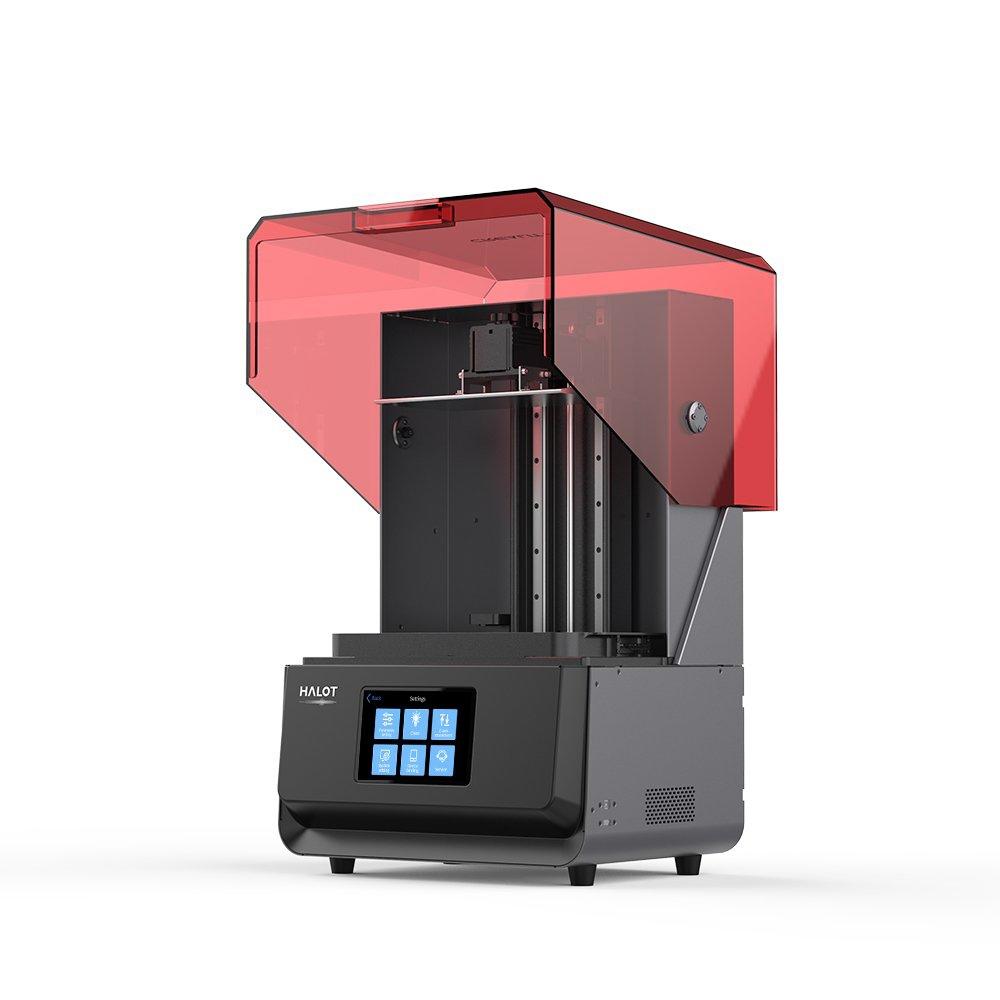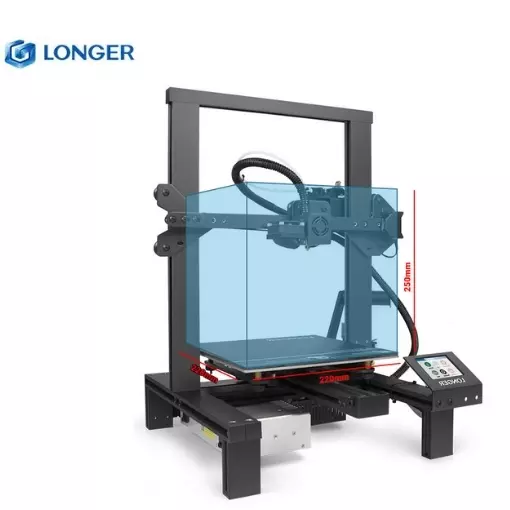Compare Halot Max vs LK4 X
Comparison between the best 3D printers
Choose the best 3D printer at the best price. The cheapest 3D printers are here.
Buy a 3D printer here with 3D Fila.
 |
 |
|
| Model | Halot Max[BUY Halot Max] |
LK4 X |
| Printing Material | Resin | Filament |
| Buy Resin for Creality 3D Halot Max | Buy Filament forLonger 3D LK4 X | |
| Estimated price | $3000,00 | $299,00 |
| Manufacturer | Creality 3D | Longer 3D |
| Release Year | 2021 | 2022 |
| Print Volume [mm] | 293x165x300 | 220x220x250 |
| Printer Size [mm] | 480x387x770 | 465x485x615 |
| Weight [kg] | 32,5 | 9,8 |
| Power Loss Recovery | NO | YES |
| Maximum Resolution [mm] | 0,03 | 0,1 |
| Processor | 8 bits | |
| Display | Display touchscreen 5'' | Touchscreen TFT 4,3'' |
| Power Supply | 12V / 320W | |
| Connectivity | SD / USB / Wi-Fi | SD / USB |
| Operating systems | Windows, Mac, Linux | Windows, Mac, Linux |
| Date of registration in the system | 2022-11-04 | 2021-04-15 |
| Release date | 2021 | 2022 |
| Extra features | The Halot Max printer stands out for its large print size (293 x 165 x 300 mm) and uses SLA technology. It has an integral light source for improved accuracy and a strong core with an advanced operating system. Its Z-axis module ensures high precision, supported by efficient slicing software. The machine offers online OTA updates and boasts an adjustable layer thickness between 10 and 200 microns. Its XY-axis resolution is 3840*2160, with 0.05 mm accuracy, and an integral 405nm light source. The printer includes a 5" touchscreen and multiple connectivity options, such as USB, Creality Cloud, and HALOT BOX WiFi. With cutting-edge technology, the Halot Max is ideal for printing small models with uniform precision, thanks to its self-developed lighting system and stable printing mechanism, which includes dual linear guides, ball screws, and an intelligent brake system. | Longer LK4 X offers intelligent 16-point auto-leveling and dual direct-gear extruders for precise filament control, compatible with multiple materials. It features an ultra-quiet 32-bit motherboard and open-source firmware, promoting creative freedom. Its PEI film platform ensures strong adhesion and easy model removal. Includes resume printing functions and filament out-of-stock protection. Assembly is simple, with 95% pre-assembled. It has a 4.3-inch touch screen, dual fan kit, low power consumption, manual belt tensioners and improved Teflon tube. |
| Support for multiple colors and materials (AMS and CFS) | NO | NO |
Notes * |
||
| Cost-benefit | 5 / 10 | 7 / 10 |
| Hardware | 1 / 10 | 2.4 / 10 |
| Tela | . | . |
| Print volume | 3 / 10 | 3 / 10 |
| Performance | 9 / 10 | 1 / 10 |
| [BUY Halot Max] |
Conclusion |
| In comparing the Creality 3D Halot Max and the Longer 3D LK4 X, it's clear that each printer has distinct advantages tailored to different user needs and budgets. The Halot Max, while significantly more expensive, offers advanced features such as a larger print volume, higher maximum resolution, and cutting-edge SLA technology. Its capabilities are suited for users seeking higher precision and professional-quality prints, particularly for intricate models, due to its superior XY-axis resolution and integral light source. However, it lacks power loss recovery, which may be a concern for some users. On the other hand, the Longer LK4 X presents a far more budget-friendly option, emphasizing ease of use with features like intelligent auto-leveling and filament protection. Its open-source nature allows for creative flexibility, appealing to hobbyists and makers who enjoy tinkering with their printers. While its print volume and resolution are modest compared to the Halot Max, its robust functionality at a lower price point makes it an attractive choice for casual users or those new to 3D printing. Ultimately, the decision hinges on the buyer's priorities: for those seeking high-end performance and are willing to invest significantly more for it, the Halot Max stands out. Conversely, for users looking for affordability without sacrificing essential capabilities, the LK4 X is a commendable option. Each printer excels in its respective category, making them suitable for different segments of the 3D printing community. |

